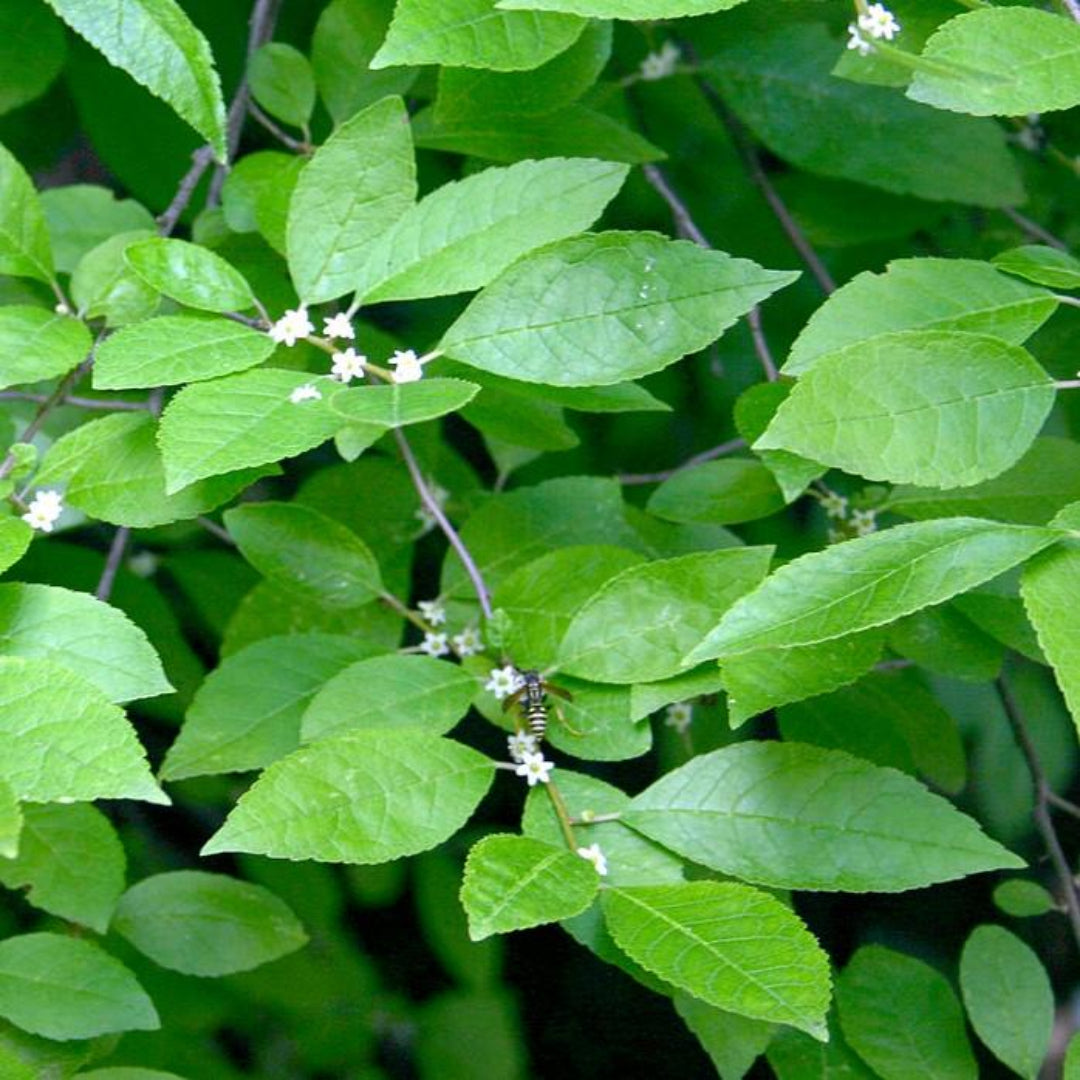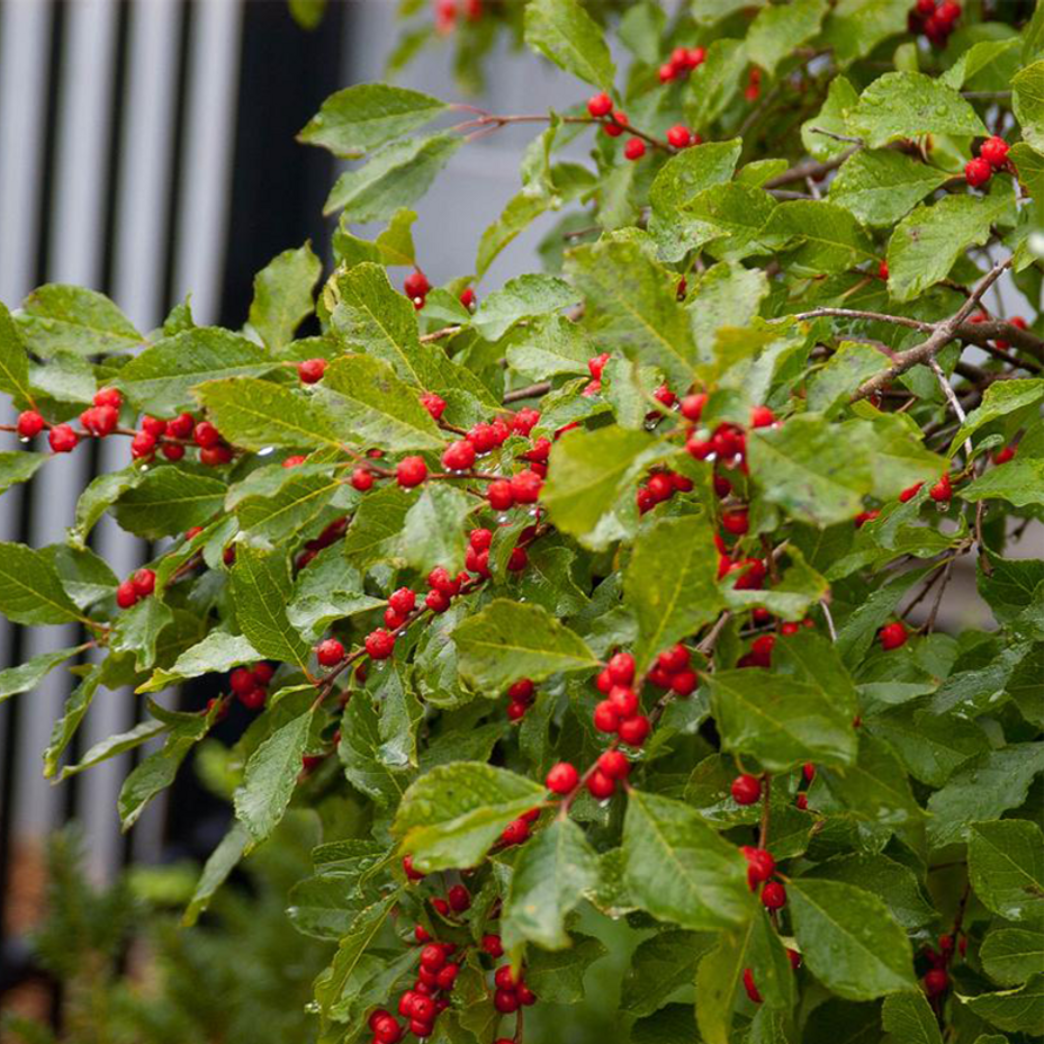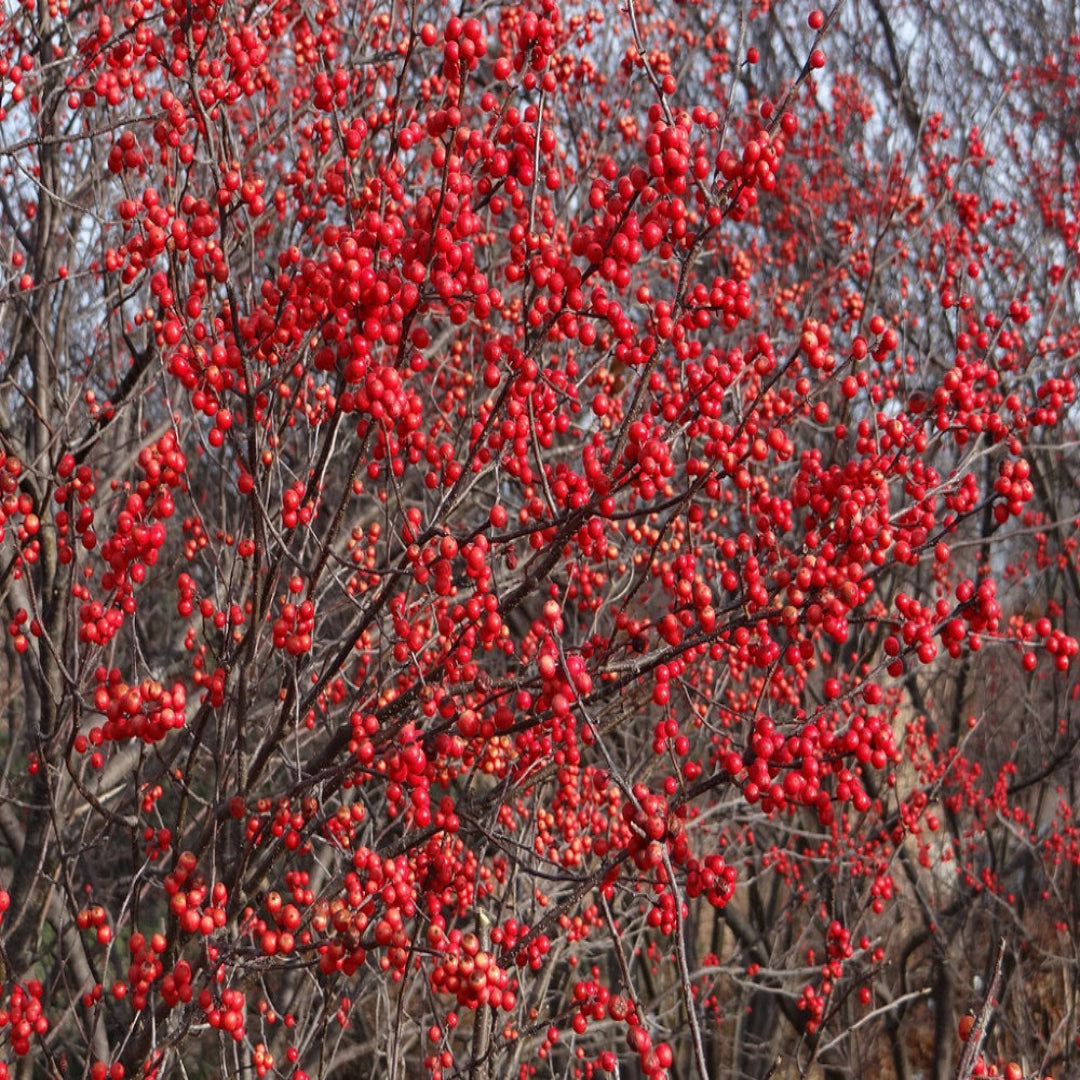





Product Details
Description
Apollo Winterberry Holly
'Apollo' is a male winterberry holly that doesn’t produce berries but plays a vital role as a pollinator for female varieties such as 'Red Sprite', 'Winter Red', and 'Sparkleberry'. Its compact form and attractive green foliage make it a tidy addition to garden beds and borders.
This low-maintenance deciduous shrub helps ensure abundant berry production when planted within 50 feet of a female holly. It’s ideal for native gardens, woodland edges, and moisture-rich soils.
- �� Male pollinator for female winterberries
- � Compact, tidy green foliage
- � Mature Size: 36–60 in. tall, 36–48 in. wide
- � Perfect for native and woodland landscapes
- �️ Thrives in moist, acidic soils
- �️ Prefers full sun to partial shade
Note: Apollo does not bear fruit but is essential for cross-pollinating female winterberries. One male can pollinate multiple females.
Growing Zones: 3–9 outdoors

| Mature Height: | 36–60 in. |
| Sunlight: | Full Sun to Partial Shade |
| Mature Width: | 36–48 in. |
| Botanical Name: | Ilex verticillata 'Apollo' |
| Growth Rate: | Moderate |
| Bloom Time: | Late Spring (flowers only) |
| Type: | Deciduous Shrub |
FAQ's
Does 'Apollo' produce berries?
No, Apollo is a male holly and does not produce berries, but it is essential for pollinating female winterberries.
What female hollies does Apollo pollinate?
Apollo can pollinate female varieties like 'Red Sprite', 'Winter Red', and 'Sparkleberry'.
How close should I plant it to female hollies?
Plant within 50 feet for best pollination results. One Apollo can pollinate several female plants.
Is it easy to grow?
Yes, Apollo is low-maintenance and thrives in moist, well-drained, slightly acidic soils.
Does it lose its leaves in winter?
Yes, Apollo is deciduous and will drop its leaves in fall.
Customer Service
Pixies Gardens
2024 Mcdaniel Mill Road Conyers GA 30094
Email: cs@pixiesgardens.com













